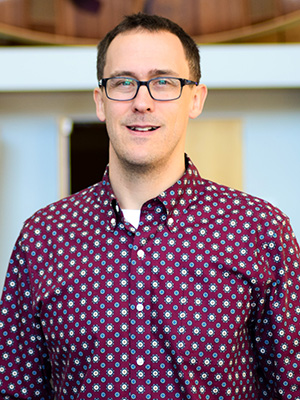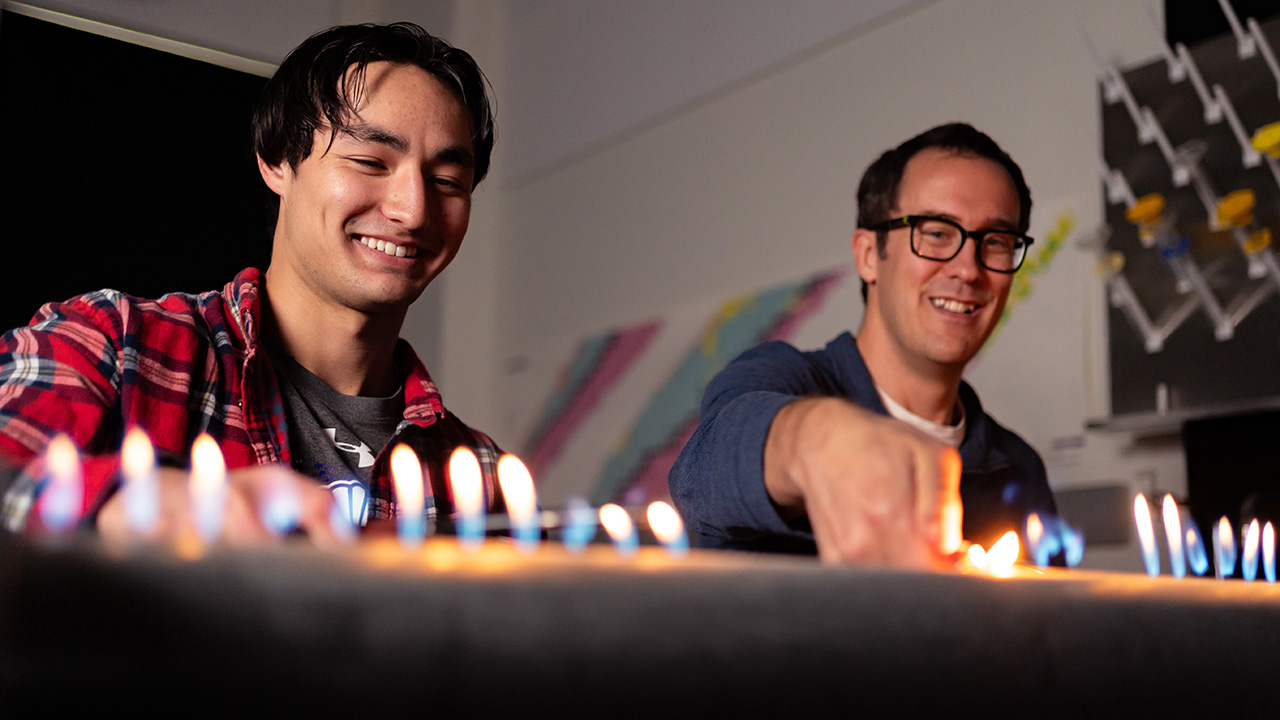Meet Dr. Adam Beardsley, Assistant Professor of Physics and General Engineering at Winona State University.
He recently received a prestigious grant from the National Science Foundation (NSF), which he hopes to use to bring exciting radio astronomy projects into the classroom.
Fun facts: Only about 5 to 10 of these awards are given out each year—across the entire country. Winona State is also the only Minnesota State school to receive a CAREER grant in the past decade.

Who Is Adam Beardsley?
Dr. Beardsley has been a professor of Physics and General Engineering at Winona State for 4 years.
He enjoys teaching at WSU because the small class sizes allow him to get to know every single student in his classes.
He also appreciates Winona State’s supportive culture:
“From my very first day, I felt like I had the freedom to explore and develop teaching methods while getting all the support I needed from my colleagues. This has allowed me try out different ideas in the classroom to make my impact more meaningful to the students.”
What Has He Been Studying in the Field?
Dr. Beardsley primarily focuses on researching radio astronomy. Radio astronomy is a branch of science that studies how to determine what stars, planets, and galaxies are made of and how far away they are from Earth.
One related project he has in progress is developing a signal processing framework for the Long Wavelength Array in New Mexico. This framework is important because it translates radio wave signals into something a computer can read and then generates images of the entire sky at extremely fast rates.
The long-term goal of the project is to use this framework in future radio telescopes to study the structure of the universe and how galaxies were created.
Another project Dr. Beardsley is working on is an educational radio telescope called the Completely Hackable Amateur Radio Telescope (CHART). In this project, undergraduate students are designing a telescope and developing all the software and tutorials needed for it to be used in high school classes.
What Grant Did He Receive from the NSF?
Dr. Beardsley was awarded a $500,000 National Science Foundation (NSF) CAREER grant—NSF’s most prestigious award for early-career faculty.
This grant will allow Dr. Beardsley and his students to explore the development of a new Winona Radio Observatory, something he believes will enable the future of radio astronomy. He and his students will carry out a variety of experiments to determine if the observatory is feasible for the area.
“I will take advantage of the semi-rural setting with bluffs that block a lot of interference to provide a test-bed platform to develop radio astronomy instruments. It will be much easier for scientists to come to Winona for their experiments than to travel to and coordinate with the major observatories.”

How Do His Research and Projects Help Students Succeed?
Dr. Beardsley believes that getting students involved in his research and projects gives them meaningful experiences to apply what they’re learning in the classroom. The experiences also make for good stories to tell during students’ job interviews:
“I try to find projects where students ‘own’ a piece of a broader project, so they can practice and demonstrate independence and leadership, while also working with others, so they can practice and demonstrate collaborative skills.”
With the NSF CAREER grant, Dr. Beardsley will be able to hire 3 student researchers each year for the next 5 years.
These students will get to work on a variety of projects in radio astronomy, such as:
- developing hardware for small-scale experiments that explore the Milky Way galaxy—think telescopes or satellite dishes that can fit in someone’s backyard.
- analyzing the radio signal bursts from Jupiter’s atmosphere.
- conducting long-baseline (or large-scale) interferometry.
Thanks to the diversity in these projects, Dr. Beardsley can match each student with a project that aligns with their individual goals and skills, which will ensure a personalized and enriching research experience at Winona State.
“Getting students involved with projects that align with their personal interests and career goals ensures they can commit to the experience. I want them to feel invested. WSU students also tend to be very keen to see how ideas and concepts get applied to the real world, so I think they really appreciate seeing and participating in research where they can take what they learn and see it out in the wild.”